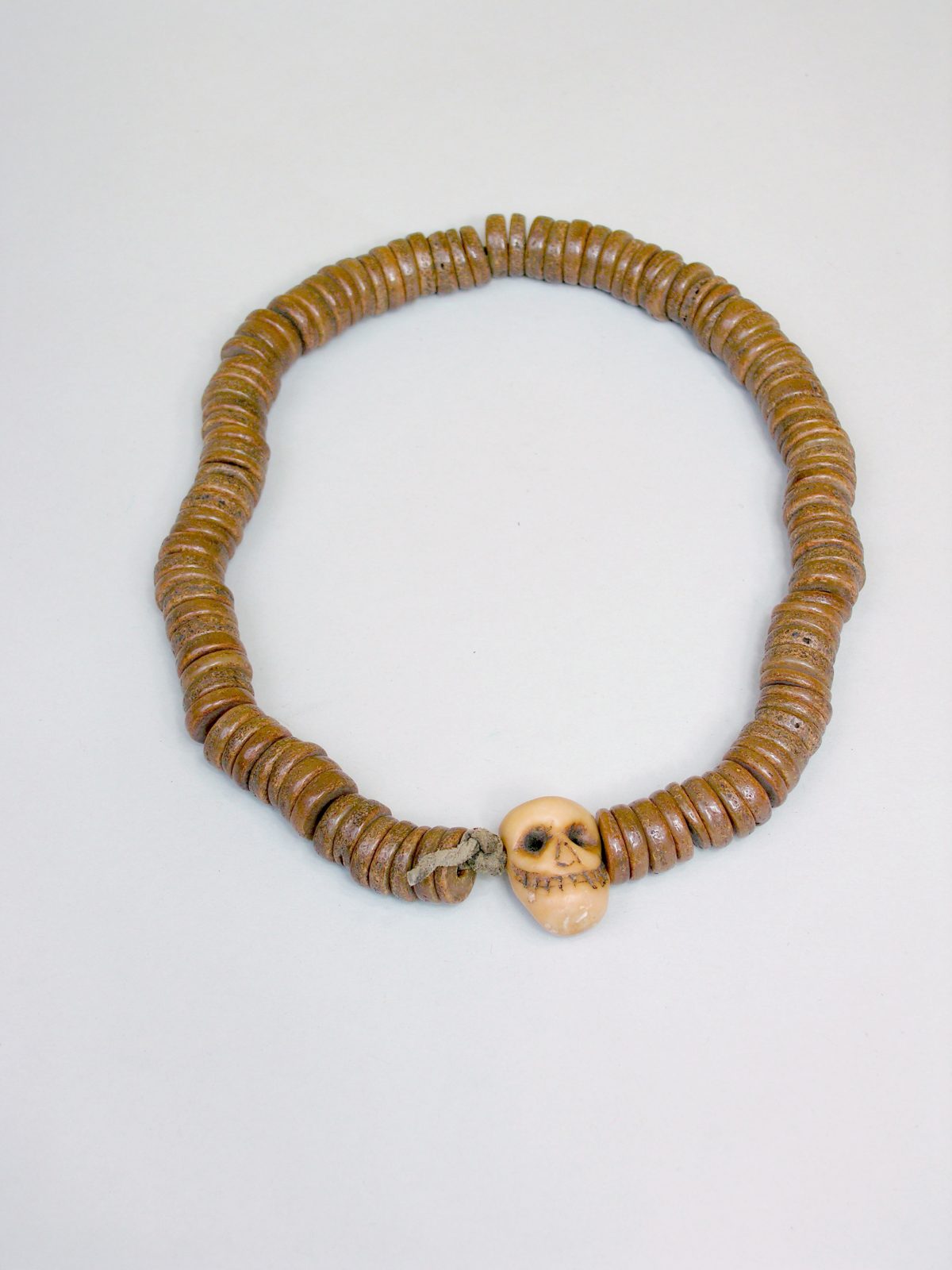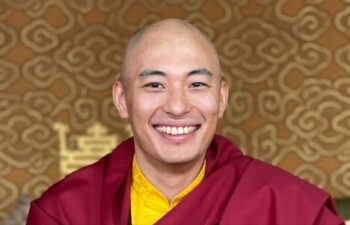

This week’s meditation session is led by Phakchok Rinpoche and the theme is Change. The guided meditation begins at 21:52.

Human Cranium Prayer Beads; Tibet; 18th or 19th century; Cranium and stone; Rubin Museum of Himalayan Art, Gift of Anne Breckenridge Dorsey; C2012.6.4
Tantric practices combined with Tibetan Buddhists’ fervent devotion to religious teachers and tantric masters are evident in the particular thoughtfulness given to prayer beads carved out of human cranium. These beads are said to be especially potent and beneficial for wrathful tantric Buddhist practices and can only be handled and used by those who have been initiated into the practice. It is prescribed that they should not be seen or touched by others, and when not in use should be placed on an elevated or consecrated ground. If these beads contain fragments of the cranium of a famous master, their effectiveness and the power of the master’s blessing are greatly increased and continue to grow exponentially with each recitation during the practice.

His Eminence Kalu Rinpoche is the lineage holder of the Shangpa Kagyu tradition of Tibetan Buddhism. He was born in 1990 and recognized by His Holiness the Dalai Lama and His Holiness the 12th Chamgon Kenting Tai Situpa as the tulku, or rebirth, of Kalu Rinpoche (1905–1989), a renowned Buddhist meditation master and scholar who was one of the first Tibetan lamas to teach in the West. The current Kalu Rinpoche completed his traditional three-year retreat between 2004 and 2008. Rinpoche now teaches Niguma Yoga around the world to cultivate awareness and to promote physical and mental well-being.
Get the latest news and stories from the Rubin, plus occasional information on how to support our work.